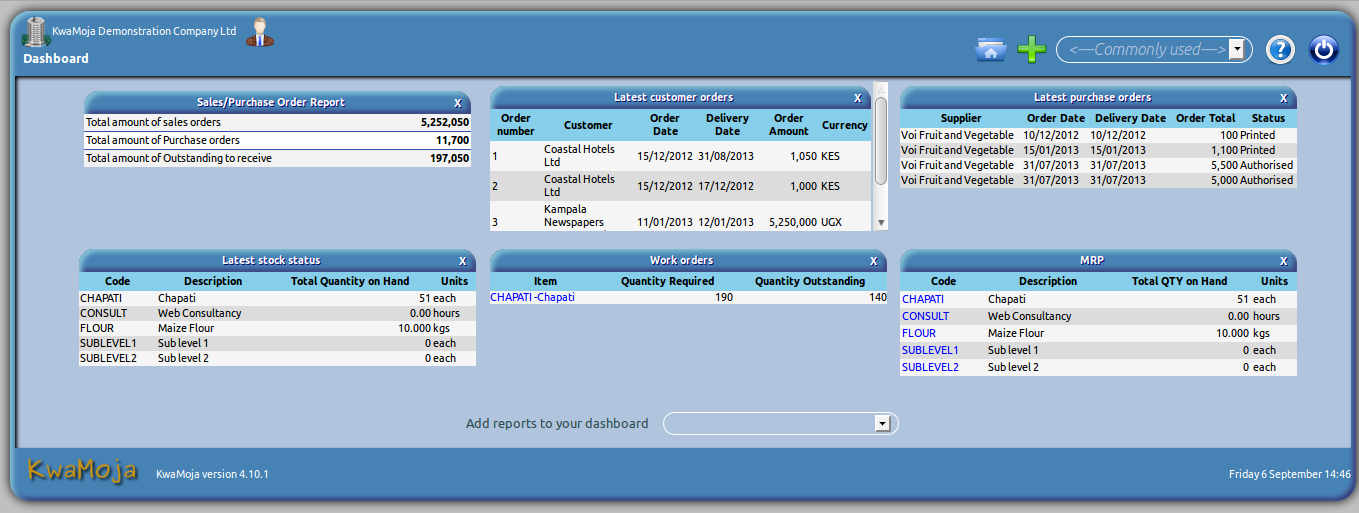One of the most important methods of keeping accurate stock levels - though by no means the most widely used, especially in Africa - is cyclical stock checking. That is the constant checking of the stock throughout a financial period, rather than leaving stock checks to the period end.
This has two big advantages in the control of an organisations stock. Firstly the stock levels are kept in a much more accurate state as they are checked more frequently, and secondly any variances are far easier to track down if the period between checking the item is much shorter.
A necessary prerequisite of cyclical stock checking is an ABC analysis of the organisations stock. By ABC analysis I mean to rank the items by:
A - The most important items to the organisation
B - Important to the organisation but not critical
C - Slow moving or non important stock items.
At the moment we have no ABC analysis. This is a proposal to rectify that.
ABC classification is a way of grouping your stock items. There are a few
different ways to set up an ABC Ranking, such as Velocity (times sold),
Quantity sold/Consumed or by Margin. But the most
common method is the Annual Sales Volume ranking.
This method will allow you to identify the small number of items that usually
account for most of your sales value (think 80/20 rule).
My plan is to first implement Annual Sales Volume Ranking method, but to do it in such a way as to make adding other methods easy in the future. To do this I propose to setup a table to hold the methods to be used. This table will have the following structure:
CREATE TABLE `abcmethods` (
`methodid` TINYINT NOT NULL DEFAULT 0,
`methodname` VARCHAR(40) NOT NULL DEFAULT '',
PRIMARY KEY (`methodid`)
);
Initially this will have just one record in,
methodid=>0
methodname=>Annual Sales Volume Ranking
The next table will contain the groups that are being used. This will specify the criteria used. Each method can have several groups. I propose the following table:
CREATE TABLE `abcgroups`(
`groupid` INT(11) NOT NULL DEFAULT 0,
`groupname` VARCHAR(40) NOT NULL DEFAULT '',
`methodid` TINYINT NOT NULL DEFAULT 0,
`apercentage` TINYINT NOT NULL DEFAULT 0,
`bpercentage` TINYINT NOT NULL DEFAULT 0,
`cpercentage` TINYINT NOT NULL DEFAULT 0,
`zerousage` CHAR(1) NOT NULL DEFAULT 'D',
`months` TINYINT NOT NULL DEFAULT 12,
PRIMARY KEY (`groupid`),
CONSTRAINT `abcgroups_ibfk_1` FOREIGN KEY (`methodid`) REFERENCES `abcmethods` (`methodid`)
);
The zerousage field is intended to hold the category into which items that have no usage at all should be put. This would normally be C or D. The months field is the number of prior months movements that should be analysed.
Finally I propose a separate table to hold the ABC category for each item and group. This would look like:
CREATE TABLE `abcstock` (
`groupid` INT(11) NOT NULL DEFAULT 0,
`stockid` VARCHAR(20) NOT NULL DEFAULT '',
`abccategory` CHAR(1) NOT NULL DEFAULT 'C',
PRIMARY KEY (`groupid`, `stockid`),
CONSTRAINT `abcstock_ibfk_1` FOREIGN KEY (`groupid`) REFERENCES `abcgroups` (`groupid`),
CONSTRAINT `abcstock_ibfk_2` FOREIGN KEY (`stockid`) REFERENCES `stockmaster` (`stockid`)
);
Using these three tables should provide for a very flexible system, easily changed in the future.
The function to actually assign the categories would work something like this:
1. Calculate
the 12 month value usage for all
of the stock items.
2. Rank the items in descending order by value.
3. The "A" items are the top
80%.
4. The "B" items make
up the next 15%.
5. The "C" items are
the remaining items that have any usage in the period being looked at.
6. Label
zero-usage items as "D".
Comments and constructive (yes Phil I am looking at you!) criticisms would be very much appreciated.







